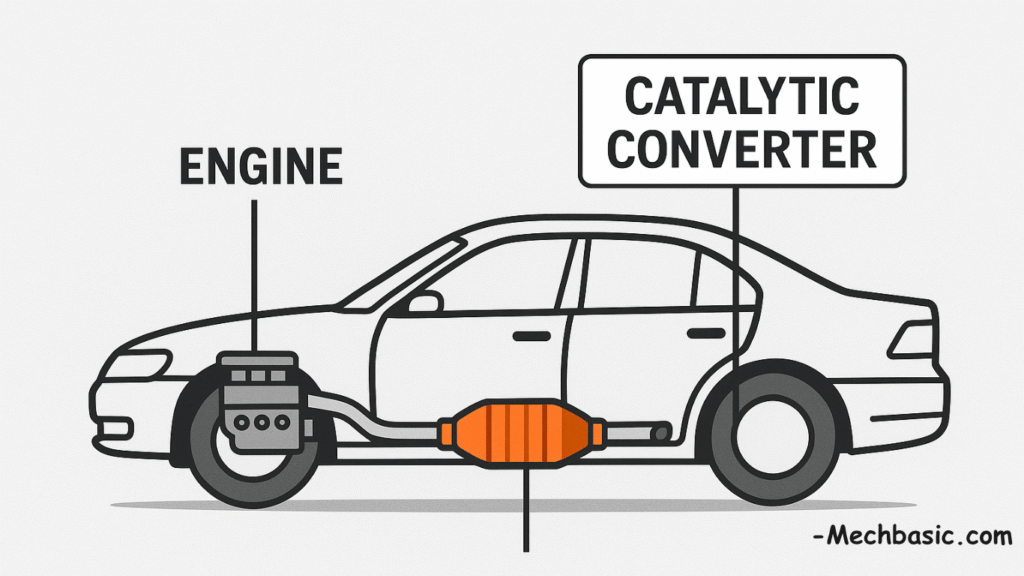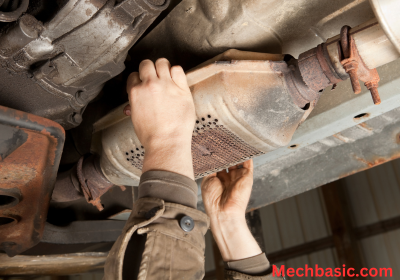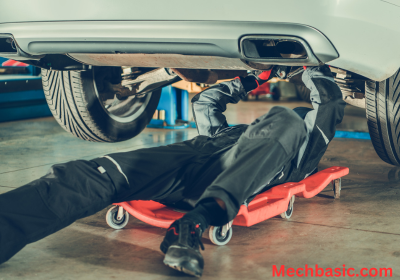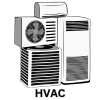A catalytic converter is a critical component of a vehicle’s exhaust system designed to reduce harmful emissions produced by the engine during combustion.
To find a catalytic converter in a vehicle, follow these steps:

Where Is the Catalytic Converter Located?
Typical Location:
- Underneath the vehicle, between the engine and the muffler in the exhaust system.
- Often bolted or welded to the exhaust pipe just after the exhaust manifold.

How to Identify It?
1. Get Under the Vehicle (Safely)

- Park the vehicle on a flat surface.
- Use a jack and jack stands or ramps to safely lift the car.
- Let the vehicle cool down — exhaust parts get extremely hot.
2. Look Along the Exhaust Pipe
- Start from the engine and trace the exhaust pipe.
- The catalytic converter is usually the first large metal canister along the exhaust pipe (about the size of a loaf of bread or a small muffler).
3. Visual Clues
- Metallic housing, often oval or cylindrical.
- May have a heat shield around it.
- Welded or bolted to exhaust pipes on both ends.
- Some have O2 sensors mounted before and after the converter.
4. Label or Serial Number (optional)
- Some catalytic converters have:
- Part numbers
- Serial numbers
- Brand names
- These can help identify OEM vs. aftermarket converters.
Importance of Catalytic converter :
1. Reduces Air Pollution
- Converts harmful gases like:
- Carbon monoxide (CO) → into carbon dioxide (CO₂)
- Hydrocarbons (HC) → into water vapor (H₂O)
- Nitrogen oxides (NOₓ) → into nitrogen (N₂)
- Helps reduce smog, acid rain, and health problems caused by dirty air.
2. Legal Requirement
- Most countries require catalytic converters by law.
- Vehicles without one fail emissions tests and may get fined.
3. Protects Engine & Sensors
- Helps keep exhaust system pressure and temperature balanced.
- Prevents damage to oxygen sensors and other emission components.
4. Maintains Vehicle Value
- A working catalytic converter:
- Helps pass inspections
- Keeps resale value higher
- Ensures your vehicle stays road-legal
5. Supports Fuel Efficiency (Indirectly)
- When working properly, it helps the engine run efficiently by maintaining correct air-fuel ratios.
Other courses:



